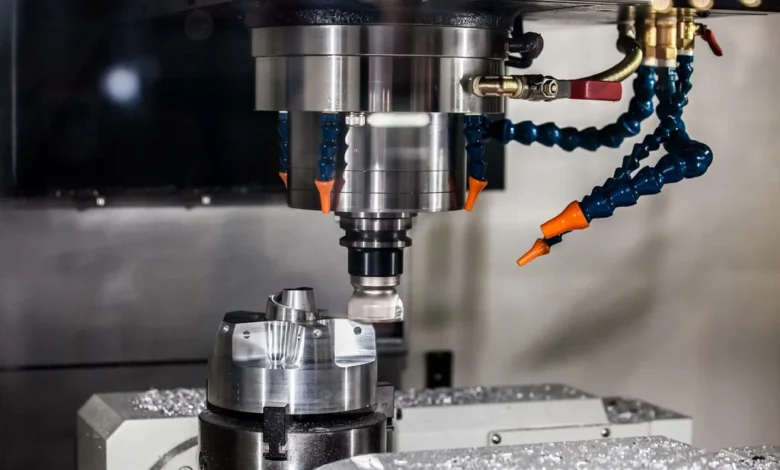CNC Machining Services for Startups: How to Prototype Like a Fortune 500 Company

In the case of startups who are in a fierce race to be the first to introduce radical products, prototyping is not only a procedure but it is the key to success. Though the Fortune 500 companies are long converted to the use of CNC machining in order to develop prototypes of high precision and in a short time, most entrepreneurs think that its quality is beyond their budget limits.
The reality is that, contemporary manufacturing has changed. The modern day on demand CNC services and digital manufacturing services/platform have democratized access to industrial grade prototyping, allowing startups to enjoy the prototyping, refinement, and validation capabilities of the major corporations. This article dishes up how even small businesses can prototype to the precision of Fortune 500 companies without shelling out the equivalent in budgets with clever CNC machining plans.
Why CNC Machining is the Gold Standard for Prototyping
Apple when coming up with a new iPhone or SpaceX when experimenting on rocket parts to use, resorts to CNC machining and that is a good reason. In contrast to the inconsistent and limited material capabilities of 3D printing or manual machining, our CNC machines provide a level of precision in custom tooling that is literally unprecedented, to a depth of precision in the hundreds of thousands of an inch (i.e., +/- 0.005 inches), using the specific metals and high-strength engineering-grade plastics resourced right here to later manufacture your production parts.
This means startups can conduct real-world stress tests, environmental trials, and functional assessments from their very first prototype. Consider how medical device startups use CNC-machined titanium prototypes for FDA testing—the parts aren’t just models, but functional equivalents to final products. This level of fidelity accelerates development cycles while reducing the costly design revisions that plague teams using inferior prototyping methods.
Startup Challenges in Accessing Quality CNC Services
Many promising startups unknowingly handicap their progress by viewing CNC machining through outdated lenses. Common myths—like needing to order hundreds of parts or pay premium prices—persist despite the rise of machine shops specializing in low-volume prototype work.
The greater danger lies in alternatives: teams that opt for cheaper 3D-printed prototypes often discover too late that material properties differ significantly from production-grade materials, while those who attempt manual machining waste precious weeks on inconsistent results.
Perhaps most crucially, investor presentations with visibly crude prototypes fail to communicate the professionalism that attracts serious funding. These challenges create a prototyping paradox—startups need high-quality parts to secure resources, but lack resources to access quality parts.
Fortune 500 Strategies Startups Can Adapt
The smartest startups reverse-engineer corporate prototyping playbooks. Perhaps most valuable is adopting the digital twin approach—using precisely machined parts to verify CAD models before committing to production tooling, a technique that saved Sonos nearly six months in speaker development cycles.
These methodologies prove that prototyping excellence isn’t about budget size, but about smart application of manufacturing principles.
How to Communicate With CNC Shops Like a Pro
Fortune 500 companies succeed with CNC prototyping because they speak the language of manufacturing fluently. Startups should emulate this by providing comprehensive technical packages including STEP files (for universal compatibility), fully dimensioned drawings with critical tolerances called out, and explicit surface finish requirements.
The smartest founders include a brief but clear cover sheet specifying: “This is for ergonomic testing—cosmetic surfaces must be <63 Ra” or “These bearing housings require ±0.01mm concentricity.” Understanding the three variables of manufacturing—cost, speed, and quality—allows for intelligent tradeoffs; specifying “Standard lead time OK, but must hold ±0.05mm on bore diameters” yields better results than vague requests for “high quality.” Crucially, startups should request—and carefully consider—design for manufacturability (DFM) feedback.
When the team at Oura Ring prototyped their temperature sensor array, their CNC vendor’s suggestion to adjust draft angles saved $28,000 in subsequent injection molding tooling costs.
From Prototype to Production: Scaling Smartly
The transition from CNC prototypes to mass production separates successful hardware startups from those that stall at the prototype stage. CNC-machined parts naturally evolve into bridge tooling—short-run production using the same machines but optimized for higher volumes.
Companies like Peloton used this strategy to fulfill early orders while injection molds were being fabricated. Smart startups build supplier relationships vertically, beginning with a shop’s prototyping services then growing into their production capabilities.
The most sophisticated teams implement what Tesla calls “prototype-to-production traceability,” using CNC prototypes not just for design validation but as process qualification parts—proving out inspection methods and quality systems that will later scale. When the team at Formlabs developed their 3D printers, their CNC-machined aluminum extruder components became the reference standards for eventual die-cast production parts, cutting their production ramp time by 40%.
Conclusion
The prototyping playbook once guarded by Fortune 500 companies is now accessible to startups willing to approach CNC machining strategically. By focusing on prototype-driven design rather than just prototype creation, startups compress development timelines while avoiding the 87% of hardware failures caused by inadequate prototyping (CB Insights 2023).
The initial investment in professional CNC prototypes pays compounding returns—in accelerated funding rounds, smoother production ramps, and products that perform as designed in customers’ hands. For startups ready to begin, the path forward is clear: partner with a CNC provider that offers both prototyping expertise and production-scale capabilities, implement phased prototyping with material discipline, and most importantly, treat each machined prototype not as an expense, but as the first physical manifestation of your company’s future success.
The same CNC machining services that built Apple’s first iPhone prototypes are now within reach—the only question is whether your startup will use them as strategically as the industry giants did.

